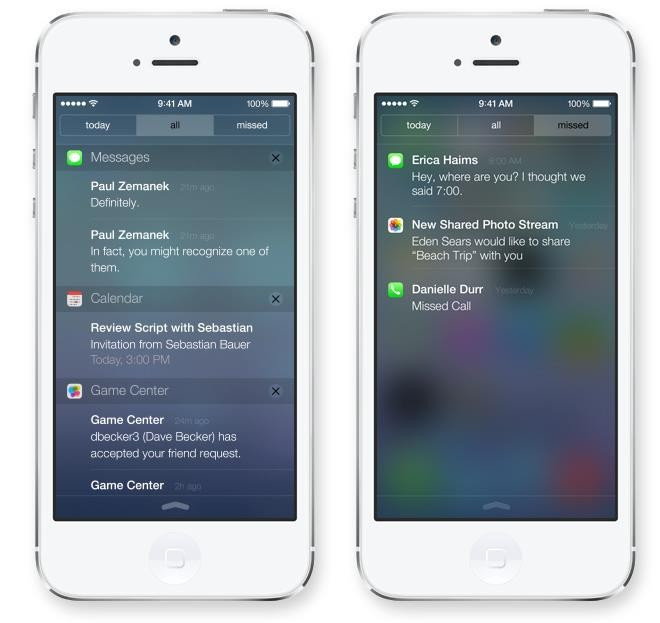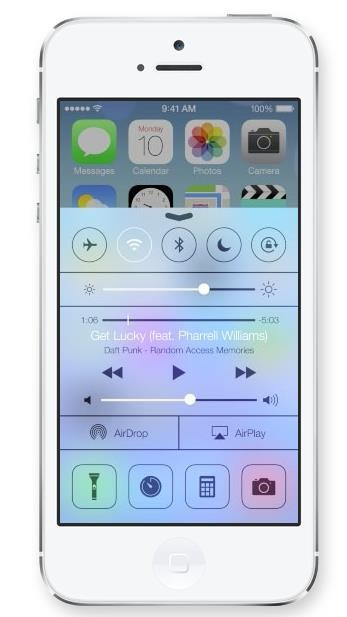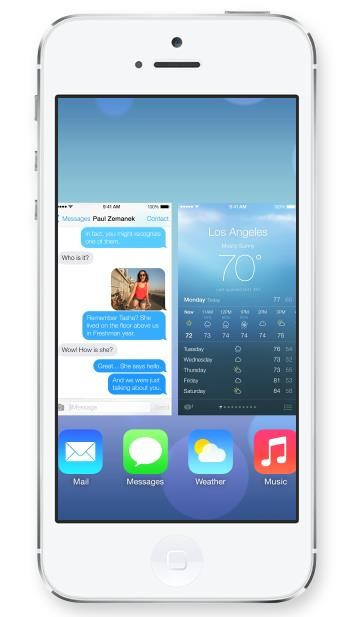iOS 7 New Features: First Impressions
With radical changes to the entire user interface, new features, and signs that Apple is heading in a completely new direction, iOS 7 has already caused a stir; here is our run down of what the new iPhone software offers so far.

Although he wasn't stood on stage in San Francisco last week, Sir Jony Ive would have felt more weight on his shoulders than most during Apple's WWDC keynote.
The rumour mill had provided wall-to-wall coverage of what iOS 7 might be ever since it was announced last year that the Londoner would take on both hardware and software design for the iPhone, iPad and iPod touch.
We heard about 'flat design', the removal of real-world metaphors and skeuomorphic design, and as the keynote went on that's exactly what we got; iOS 7 is a huge update, without doubt the biggest and most thorough the iPhone has seen in its six-year existence.
But first a caveat: Although iOS 7 was announced, revealed and demonstrated live, it isn't finished yet and won't be available to the public until the autumn.
As a result, this isn't a review of iOS 7, but a guide looking at some of the most important new features. Our full review will be coming later in the year.
Layers and the parallax effect
Although flat in terms of colour and texture, iOS 7 is a user interface of many layers. At the back you have the wallpaper, then the home screen icons, followed by the Notification Center and Control Center, before finally pop-up notifications and alerts sitting at the top.

Using the iPhone's accelerometer, Apple has created the illusion of icons sitting above the wallpapers, and tilting the phone lets you peek around them. The animation serves no real purpose, but is distinctly Apple in its ability to draw attention to the simplest of things.
Covering the home screen, Notification and Control centres are semi-transparent, letting the colours of the new app icons (or whatever else is underneath) leak through, adding to the sense of layers stacked on top of each other.
Animations
As hardware becomes more powerful and screens more detailed, Apple has introduced many new animations to make moving around iOS 7 as smooth as possible.
The first new tweak is when you press the power button the screen fades up to full brightness, and fades out again when you lock the phone. It's a tiny change but one which is satisfying once you've noticed it.
Elsewhere, tapping on an application causes the interface to zoom into it, while the app icon switches to display the app opening. Press Home and the interface zooms out again back to the home screen, as the app shrinks back into its icon.
The same zooming effect can be found in the new multitasking bar, which shows a line of icons just as before but includes thumbnails of open apps; tap one, and you're whisked into the app; double-press the Home button and you zoom out to see a list of open apps.
Notification Center
Gone is the linen Notification Center drawer with its stock ticker and weather icon, replaced with a semi-transparent page with three tabs for Today, All and Missed.

The Today tab shows the date above a description of the weather in your current location ('Partly cloudy currently. The high will be 18. It will be clear tonight with a low of 11' for example) and your calendar events for the day listed by hour.
Below is a list of every share price you have set up in the Stocks app; tap a stock code and you're transported to the app itself. Finally, there's a Tomorrow section at the bottom, stating the number of calendar events and any alarms you have set for the next day.
The All tab displays all recent notifications from Facebook, Mail, Phone and others, just as the Notification Center did in iOS 6; finally the Missed tab shows in a similar fashion any alerts you haven't yet seen.
Apple has worked to synchronise notifications across your accounts; receive a Facebook message and your phone will alert you, but read that message on the web browser of your computer or any other device, and the notification on your iPhone disappears.
For someone who hates seeing the same 'unread' notifications across an iPhone, iPad, MacBook and work computer, this is a huge improvement.
Control Center
New to iOS 7 is Control Center, a panel found by swiping up from anywhere in the operating system which displays a number of toggle switches for turning on/off Airplane Mode, Wi-Fi, Bluetooth, Do Not Disturb, and the screen rotation lock.

Below these is the screen brightness control, followed by volume and playback functions for the Music app, a button to control Airplay, and finally four icons for turning the camera flash on as a torch, jumping to the timer page of the Clock app, opening the calculator and opening the camera; this seems to be a strange mix of functions, and we'd expect Apple to make some changes here before iOS 7 is completed.
Safari
iOS 7 has replaced Safari's interface with a unified address/search box which minimises when you scroll down, giving more screen space to the page you're viewing.
Tabs have been given a major overhaul. Appearing as a vertical list of all pages you have open, the taps scroll past like an old rolodex and sit in front of a background which is slightly transparent, revealing your wallpaper behind. Tabs also move around slightly relative to the background and each other when the phone is moved, just as the home screen icons do.
Background Multitasking and app wake-up
As well as ensuring notifications read elsewhere are removed from your unread list, iOS 7 also uses incoming notifications to prepare closed apps for use. Say you get an email while the phone is locked; iOS 7 will boot up Mail in the background, download the incoming message and have it ready for when you next open the app.

The system also monitors your daily habits to have applications ready when it thinks you'll need them. If you read the BBC News app on your train to work at 7am every morning, then iOS 7 will recognise this and update the app, ready to open at that time and saving you from waiting for the headlines to refresh.
These are just a handful of dozens of changes Apple has made, and with this being only the first beta for iOS 7, we can expect to see many more before the final version is released later in the year.
iOS 7 will be made available to the public in the autumn and will be compatible with the iPhone 4, 4S and 5, as well as the iPad 3, 4 and mini, although not all features will be available on every device.
© Copyright IBTimes 2025. All rights reserved.






















